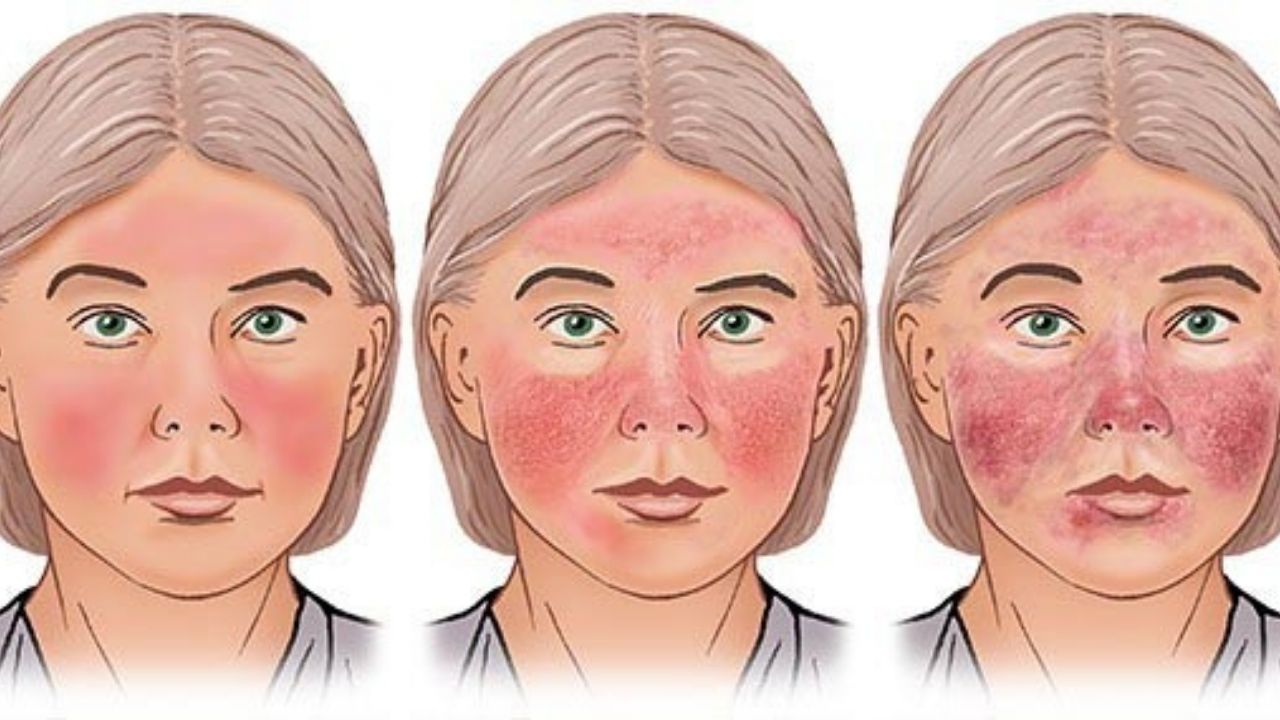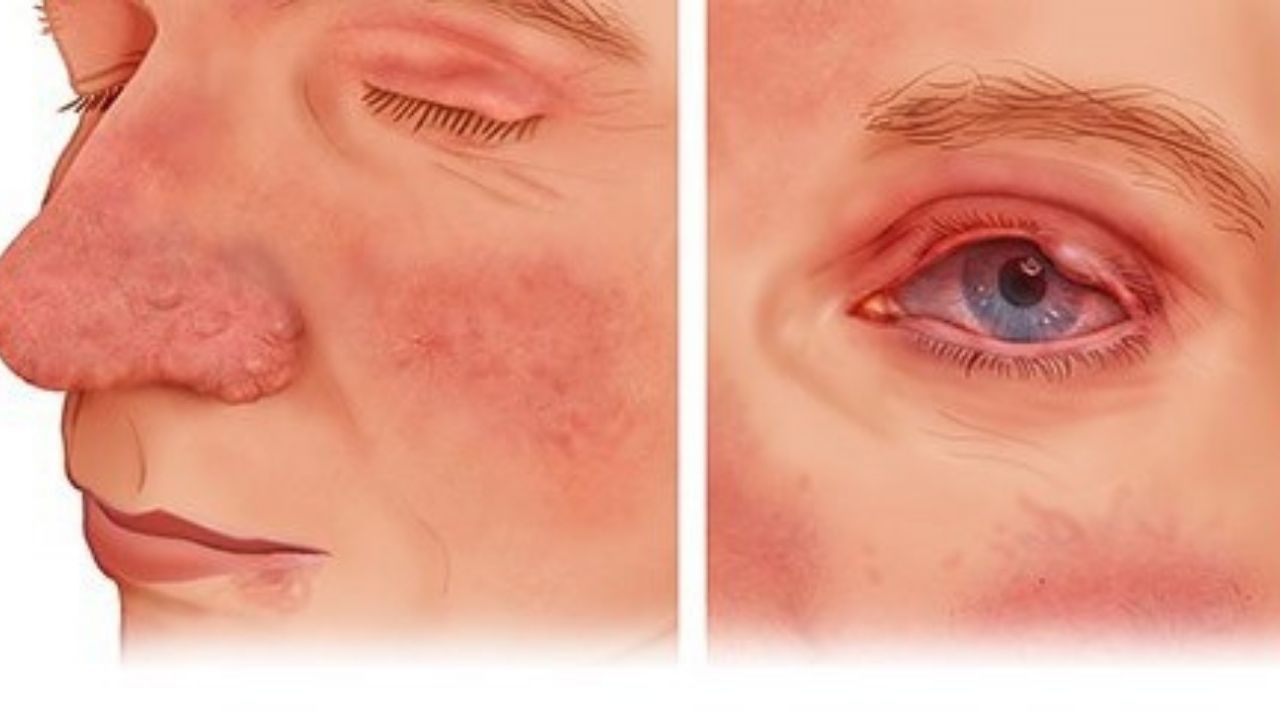Many people want to know rosacea can be cured? unfortunately There’s no cure for rosacea, but you can control it with treatment. treatments can help you manage the redness, bumps, and other symptoms.
At a glance
- Rosacea is a common, non-contagious skin infection.
- Red spots, visible veins and pustules on the face are typical.
- The symptoms often appear in flares.
- The skin can usually be treated well with gels, lotions or creams.
- Good skin care and avoiding certain triggers will help prevent symptoms.
Introduction of rosacea
Red spots, visible veins and pustules on the face: These are typical signs of rosacea – a common inflammation of the facial skin that usually occurs in flares.
Like any visible skin condition, rosacea can affect well-being and self-esteem. However, many people are not even aware that their patchy, red facial skin is caused by a treatable condition. There are different ways that inflammation alleviate and prevent flare-ups.
Symptoms of rosacea
Rosacea is a chronic, non-contagious inflammation the facial skin. It can vary in severity and affect the cheeks, chin, forehead and nose. The scalp, the skin on the neck or in the chest area also become inflamed less frequently.
Rosacea is often divided into four types:
- Type 1: The skin of the face is red, veins are sometimes visible.
- Type 2: In addition to the reddening of the skin, skin nodules (papules) and pustules form.
- Type 3: The skin is thickened and inflammatory nodules sometimes develop, especially on the nose.
- Type 4: Rosacea leads to inflammation of the eyes and eyelids, sometimes without noticeable skin symptoms.
The skin may also become drier, swell a little, and easily peel, burn, or itch. It is more sensitive and easily irritated than healthy skin.
Rosacea can look very different, and there are many mixed forms. The division into four types is therefore only a rough orientation. The individual complaints and skin changes are always decisive for the treatment.


Causes of rosacea
Why rosacea develops is not yet fully understood. Probably play a role:
- Inflammatory and immune responses.
- Changes in blood vessels in the skin.
- Familial predisposition.
- Disturbed protective function of the skin.
- Hypersensitivity to certain mites (hair follicle mites) or bacteria.
Sunlight, intense heat or cold, and stress are examples of triggers for flare-ups.
Rosacea-like symptoms can also be promoted by the long-term use of cortisone preparations (steroid rosacea). However, if the funds are used correctly, this risk is very small.
Even if purulent pustules can develop with rosacea, it is not a form of acne : in contrast to acne, the skin’s sebum production is not increased in rosacea.
Course of rosacea
Rosacea symptoms often appear in flares: times with more pronounced skin changes alternate with phases in which the inflammation subsides.
Over time, the skin may change and other symptoms may appear. However, the symptoms often remain the same for a long time.
Follow
A bulbous nose, a so-called rhinophyma, can develop over time as a result of skin changes and growths, especially in men. This can be very stressful psychologically, especially if the shape of the nose changes significantly.
In ocular rosacea, the eyes may be red, itchy, and watery. They can also become more sensitive to light. When the sebum glands on the eyelids become clogged, the eyes can dry out. Also inflammation of the conjunctiva, the edge of the lid and the cornea are possible and can be painful. Sometimes it feels like there is a foreign body in the eye.
Complications in the eyes, such as corneal inflammation, are very rare. This is an emergency as there is a risk of vision loss. Symptoms may include eye pain or a foreign body sensation, difficulty seeing, or changes in your eyes cornea or the vitreous. In the case of such complaints, immediate medical help is important!
Diagnosis of rosacea
Dermatologists can recognize rosacea by the typical skin changes. If the eye is also affected, an additional ophthalmological examination is usually advisable.
Prevention of rosacea
Good skin care is recommended to prevent recurrence. This includes paying attention to sufficient sun protection, soap-free cleaning products with a low PH value use and avoid irritants.
Possible irritants in skin care products include alcohol, camphor, menthol, mint, eucalyptus, fragrances, fruit acids, and chemical or mechanical exfoliants.
When washing your face, it is best to use lukewarm to cool water and then gently dab the skin with a towel. Water that is too hot or too cold can cause or worsen reddening of the skin.
If the skin is too dry, moisture-binding agents can help. This also relieves itching and protects against cracks that can promote inflammation.
Often, certain triggers for relapses can be identified over time. In general, anything that can cause facial redness will also increase rosacea. Typical triggers include:
- Hot drinks.
- Certain medications such as vasodilators.
- Hot spices and foods.
- Sunlight.
- Extreme temperatures.
Keeping a rosacea diary can help identify possible triggers. Those who know them can avoid at least some of them.
Treatment of rosacea
More severe skin changes can be treated with medication. Means for application to the skin are usually sufficient. Which active ingredients are suitable depends on the appearance of the rosacea:
- A gel containing the active ingredient brimonidine helps against redness.
- Creams or gels with the active ingredients azelaic acid, ivermectin or metronidazole help against nodules and pustules.
If topical treatment of nodules and pustules is not sufficient, the anti-inflammatory antibiotic doxycycline can be taken as a tablet.
A severely altered nose (rhinophyma) can be treated with oral medication or surgery. This also depends on whether the nasal skin is “only” inflamed or whether conspicuous skin growths have formed.
Life and everyday life
Even if rosacea is mostly harmless, reddening of the face or nose can be psychologically stressful. Curious looks from others or the assumption that the cause of the “red nose” is excessive alcohol consumption are not uncommon.
Such reactions usually arise because many people do not know what rosacea is. It can therefore help to deal openly with the disease and to explain to family, friends and at work what it is all about.
If the redness on the face is very noticeable, it can be concealed with skin-friendly make-up or a concealing cream. We advise against using waterproof and oily or greasy products: Because they are less easy to remove, the skin is additionally irritated when removing make-up. Products with a greenish tone are suitable, which as a complementary color evens out redness. The dermatologist can also help you to choose the right products.
Further information
The family doctor’s practice is usually the first point of contact when you are ill or need medical advice with a health problem. We provide information on how to find the right practice, how best to prepare for a visit to the doctor and what is important.
Rosacea can be cured permanently?
There’s no cure for rosacea, but you can control it with treatment. treatments can help you manage the redness, bumps, and other symptoms.
